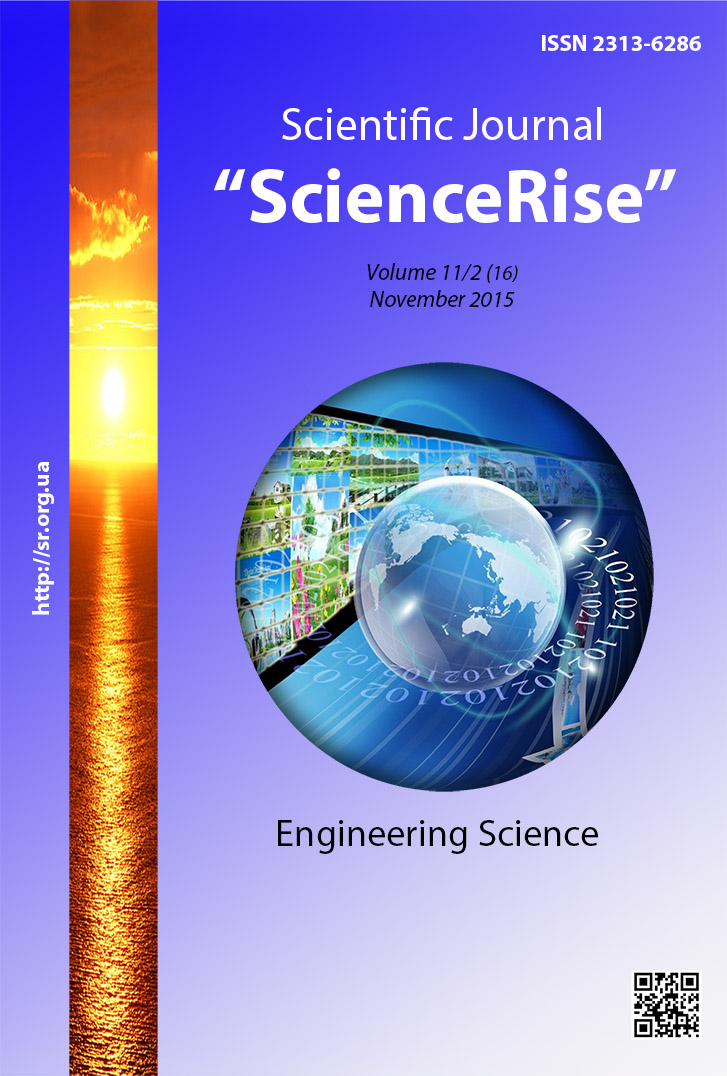Glass containing portland slag cement materials
DOI:
https://doi.org/10.15587/2313-8416.2015.54099Keywords:
glass powder, granulated blast furnace slag, Portland slag cement, compressive strength, porosity, mathematical modelingAbstract
The effect of glass powder on the kinetics of curing materials based on Portland slag cement is investigated. As a result of optimizing the domain of existence it is obtained binder composition, limited by the axis X1 from 25 to 55% of the axis X2 from 5 to 7.5 % and the X3 axis values of W/C from 0.243 to 0.33, allowing to obtain an artificial stone, characterized by a compressive strength of 30-106 MPa in the range 2-90 days of hardening, characterized by porosity: total - 27.1 %; open - 21.42 % and closed – 5 %
References
Bazhenov, Y. M. (2005). Concrete Technology of the XXI century. Newresearch areas of building materials: materials reports Academic readings RAASN. Belgorod Univ BSTU.V.G. Shukhov, 9–19.
Pushkarevа, K. K., Gonchar, О. A., Pavlyuk, V. V., Bondarenko, О. P. (2008). The principles of composite construction quick-alkali portland slag cement. Resursoekonomni materials, constructions and buildings, 16, 82–90.
Pushkarevа, K. K., Bondarenko, О. P. (2008). Features production and prospects of concrete based on alkali portland slag cement. Stroytelnye materials and sanytarnaya technics, 29, 72–80.
Bondarenko, O. P. (2009). Quick-alkali portland slag cement and concrete on their basis. Kyiv, 21.
Pushkareva, K. K., Bondarenko, O. P. (2011). Technological features concrete production based on the alkali portland slag cement. Scientific Papers "Building structures", 74, Book 2, 116–122.
Bondarenko, O. P. (2012). Plastifying the alkali portland slag cement and concrete on their basis. Bulletin of the Odessa State Academy of Construction and Architecture, 48, Part 1, 41–45.
Moskalenko, O. A., Runova, R. F. (2015). The influence of additives on integrated mobility on shlakovmisnyh Portland cement concrete for monolithic construction. Resursoekonomni materials, structures, buildings and facilities, 30, 50–56.
Moskalenko, A. A. (2015). The influence of complex additives for concrete mobility based vysokonapovnenyh shlakovmisnyh Portland. Resursoekonomni materials, structures, buildings and facilities, 31, 330–336.
Steklobeton. Available at: http://stroivagon.ru/rastvoryi/steklobeton
Egorov, K. I., Mamina, N. A. (1998). Waste glass ecology, information, business. Building materials, 10, 33
Meyer, C. (2001). Recycled glass from waste material to valuable resource. Recycling and Reuse of glass Cullet: Proceedings of International Symposium. Dundee UK, 1–10.
Wihsmann, F. G., Forkel, K., Ploska, U. (1996). Glass-forming Silicate Minerals and their Derived Chemical Compositions. Chemie der Erde, 54, 414–420.
Ketov, A. A. (2003). Peculiar chemical and technological properties of glass cullet as the raw material for foamed insulation. Recycling and Reuse of Waste Materials: Proceedings of the International Symposium. Dundee UK, 695–704.
Zaitseva, E. I. (1998). Foamed insulation material on the basis of broken glass. Moscow, 22.
Orlova, L. A., Spiridonov, Yu. A. (2000). Building glass ceramic materials. Building materials, 6, 17–20.
Solomatov, V. I., Yerofeyev, V. T. (2000). Pattern formation and properties of composites based on glass breakage. Math. Universities. Building, 9, 16–22.
Krivenko, P. V., Pushkareva, E. K. (1993). The durability of concrete shlakoshchelochnyh. Kyiv: Budivelnik, 224.
Downloads
Published
Issue
Section
License
Copyright (c) 2015 Ольга Петровна Бондаренко, Сергей Григорьевич Гузий, Екатерина Дмитриевна Захарченко

This work is licensed under a Creative Commons Attribution 4.0 International License.
Our journal abides by the Creative Commons CC BY copyright rights and permissions for open access journals.
Authors, who are published in this journal, agree to the following conditions:
1. The authors reserve the right to authorship of the work and pass the first publication right of this work to the journal under the terms of a Creative Commons CC BY, which allows others to freely distribute the published research with the obligatory reference to the authors of the original work and the first publication of the work in this journal.
2. The authors have the right to conclude separate supplement agreements that relate to non-exclusive work distribution in the form in which it has been published by the journal (for example, to upload the work to the online storage of the journal or publish it as part of a monograph), provided that the reference to the first publication of the work in this journal is included.

